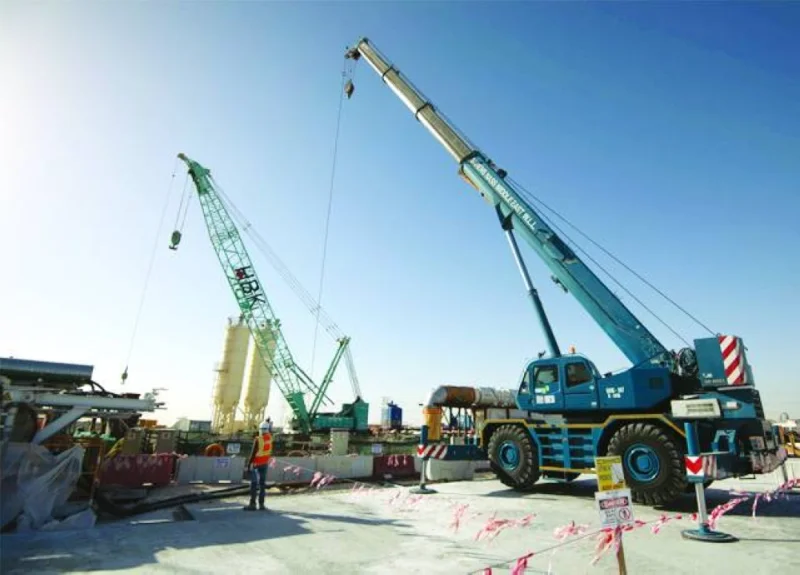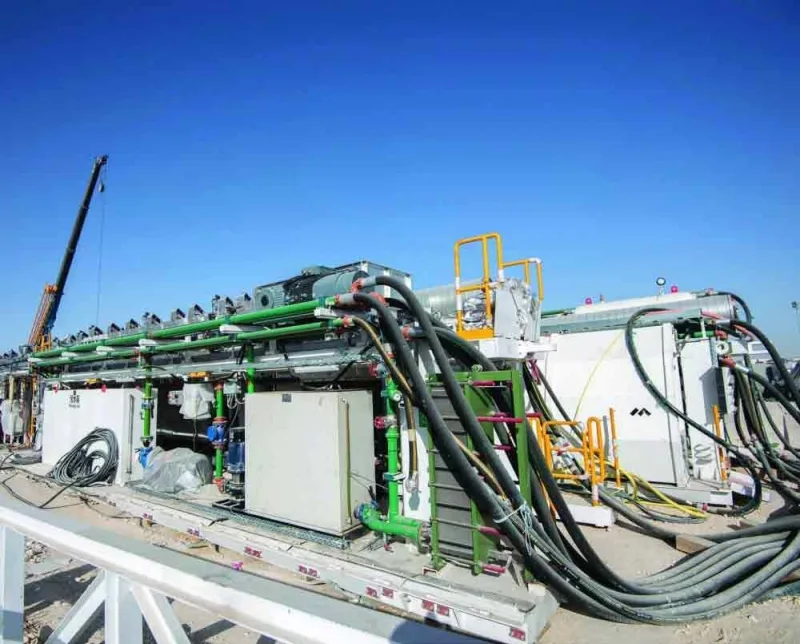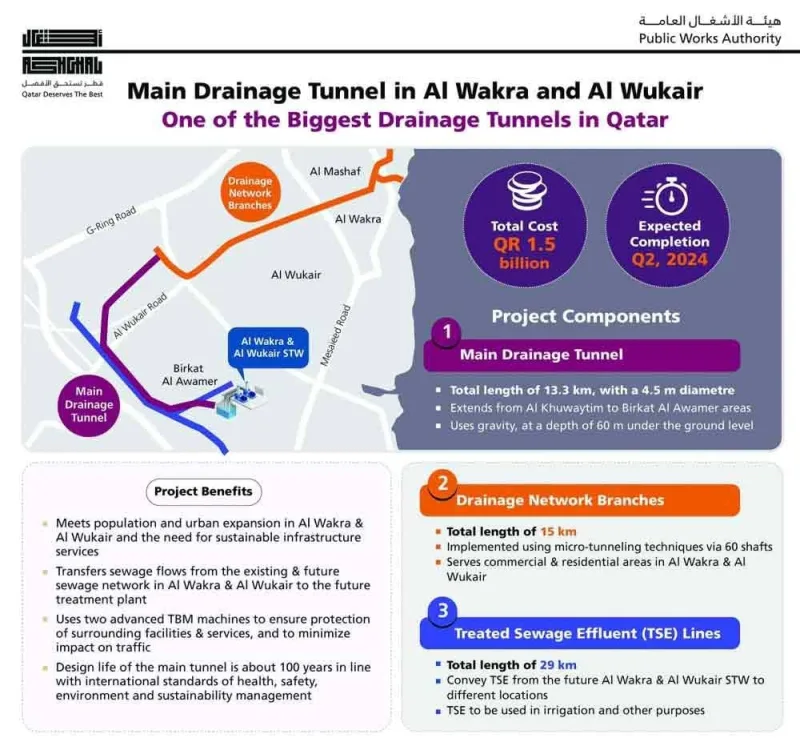The Al Wakra and Al Wukair sewage project by the Public Works Authority (Ashghal) will enhance the sewage network in the South while bringing in a remarkable leap in the efforts to address the sewage woes. Also, the project will protect Qatar’s environment and ensure sustainable practices and quality of life amidst the rapid growth of the country and its population.
According to details on Ashghal’s website, the main drainage tunnel will accommodate the drainage flows from the current and future drainage network in different areas in Al Wakra and Al Wukair and transfer these flows to Al Wakra and Al Wukair Sewage Treatment Works. The main drainage tunnel, which will operate by gravity, will extend from Al Khuwaytim to the Birkat Al Awamer areas, with a total length of about 13.3km and a diametre of 4.5m.
The excavation works are carried out by two deep Tunnel Boring Machines (TBM) at a depth of about 60m underground. The TBMs incorporate advanced technologies since they were specifically designed to suit the geological characteristics of Qatar, to ensure the efficiency of the excavation process and provide the maximum safety standards for workers. This is in addition to guaranteeing that no damage will be caused to the services or facilities surrounding the tunnel.
The project includes the construction of eight shafts from land to the bottom of the tunnel, with depths ranging from 50 to 63m underground. These shafts are made to execute the deep excavation works and carry out inspections and periodic maintenance of the tunnel.
The plant is expected to start operations by the second quarter of 2024 and is implemented by Ashghal through the public-private partnership (PPP) model. The sewage treatment plant with an initial capacity of 150,000 cubic metres a day will treat wastewater from various localities in Al Wakrah and Al Wukair. The plant, according to the website, will meet international standards in terms of machines and functions. The project features a Terminal Pump Station (TPS) with an Odour Control Facility (OCF), sludge treatment units and Treated Sewage Effluent (TSE) management units.
The design life of the main drainage tunnel is about 100 years. The tunnel's innovative design adopts the best construction practices and will be implemented by international standards of health, safety, environment and sustainability management.






